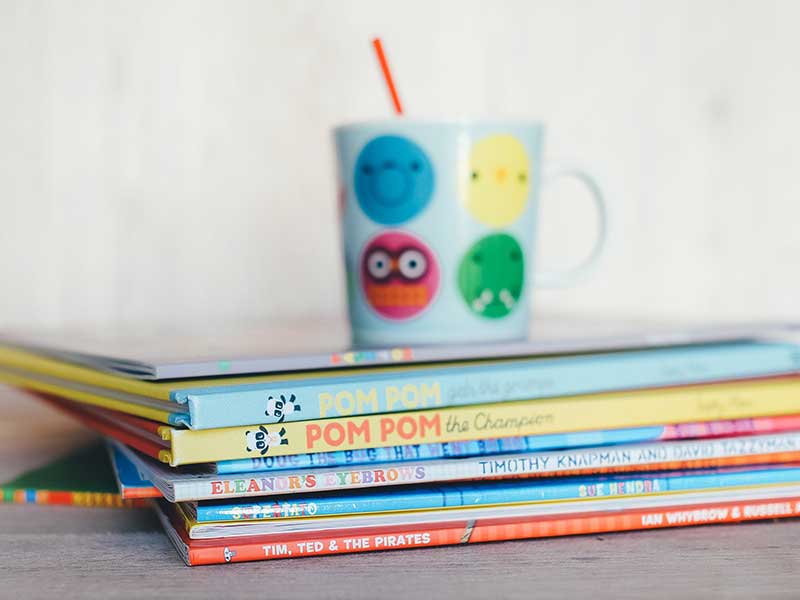Children’s books have no age limit
They used to speak of their passion in hushed tones. After all, they thought, what fully-grown adult would freely admit to their love of young adult literature? More recently, the YA section of libraries and bookshops have become a free-for-all, with those long past their youth proudly admitting to their preference for young adult literature.
But it is not the YA section to which I have an age-inappropriate attraction. No, it is much worse: it is the children’s section. Since the arrival of my first child, I have found myself immersed in a world of green sheep, stickmen, Sneetches and anthropomorphism. And it has been wonderful.
I have been swept away with the rhymes, laughed at the simple jokes and swooned over all those cute baby mice. I know, it’s a problem.
Fortunately, my children have been the perfect foils, enjoying books as much as I do. We read Where is the Green Sheep?until the spine split. We read Spot books after they had lost all of their flaps to clumsy little fingers and other books that were crackly after being dropped in the bath or splattered with mashed vegetables.
In the lead up to Christmas, I laughed with the kids about the misadventures of The Naughtiest Reindeer, and learnt the answer to the question we all ask: What Does Santa Do When it’s Not Christmas? The title of Ahn Do’s bookWhat Do They Do With All the Poo From All the Animals at the Zoo? speaks of the fun within, and we all giggled at Nick Bland’s alarmed flea in The Very Itchy Bear, and marveled at the thoughtfulness of the very ordinary sheep in The Very Cranky Bear.
But, it isn’t just the clever new books that have caught my attention. I also love revisiting those I remembered from my childhood.
Just a few weeks ago I read took out The Digging-est Dog to read to my children, but they said they’d read it with their grandmother already. So I sat on the couch on my own and revisited this childhood classic. Just like the best adult books, it was sad, it was funny, it was heart-warming. And unlike any adult book I have read, rhyme was irresistible. That musicality is a key reason why I find children’s books so appealing. When you read them out loud, you are almost singing, and there is undoubtedly something joyful in that.
Then there was A Fly Went By, the Mr Men books and, of course, Dr Seuss’s many classics. And who could forget Corduroy, the little bear who searches a department store at night in search of a missing button, after he has been left behind by a little girl? The story has it all: disappointment, the loneliness, and ultimately, the relief and joy when the girl returns to buy Corduroy, as flawed as he might be without his button. Who needs Pride and Prejudice when you can take this emotional journey in the span of a picture book?
It won’t be long until I can introduce my children to The Enchanted Wood, The Wishing Chair and The Naughtiest Girl in School, and I can’t wait.
While I am a little embarrassed by my predilection for children’s books, Mem Fox considered children’s books to be just as good as adult ones (although she might be a little biased, seeing she writes them).
“Writing for them [children] is enormously difficult. It is even more difficult than writing for adults since only the best is good enough for children – the best words in the best places, and the best characters in the best stories.”
And it makes sense that children’s books would have to be highly entertaining, as they have to appeal to tough and brutally honest readers: children. If they are bored, they won’t give the author another chance – they’ll leave the room, or chew on the cover.
Maxim Gorky agreed with Fox on the difficulty of writing for children when he said,
“You must write for children the same way you write for adults, only better.”
But it’s not just the writing that is so engaging – the illustrations can be equally memorable. In Twinkle, a little girl finds a star that has fallen to earth. Its pictures show New York at night time, with its inky sky, punctuated by stars, and the city’s recognisable landscape and architecture down on earth. It’s gorgeous.
Despite all of this, it’s certainly not every children’s book that is so engaging. Some are dreadful, at least to me, and it pains me to read them. I would be happy if I never had to read Hullaballoo again. And true to its name, I can never read more than a few pages of Dr Seuss’s Sleep Book before I feel a desperate urge to go to doze off. Fortunately, though, this is not the case for most.
It will be a sad day when my children move on from enjoying picture books, and can no longer pretend I am reading the books just for them. Perhaps then I will move on to YA fiction with them. For their sake, of course.




